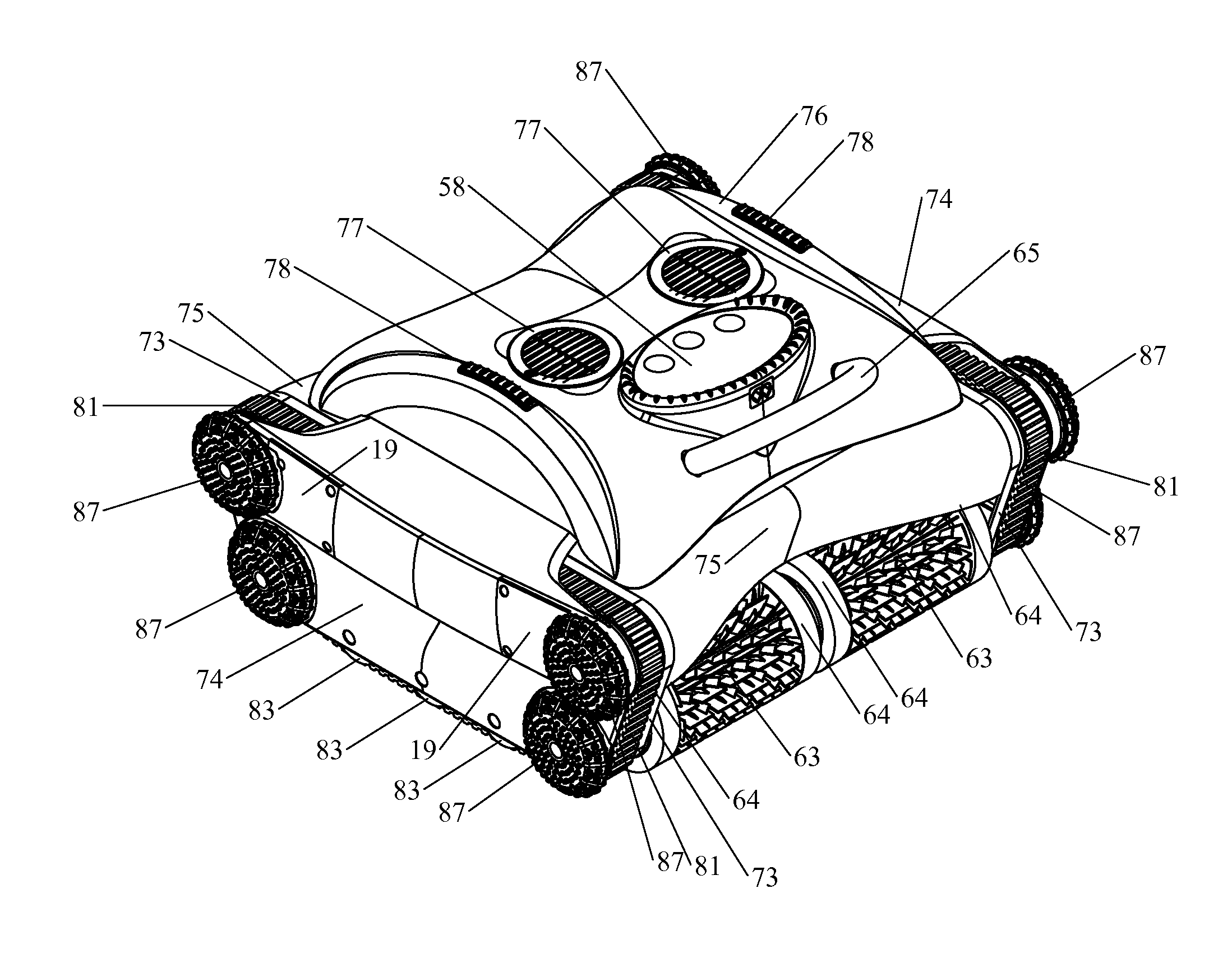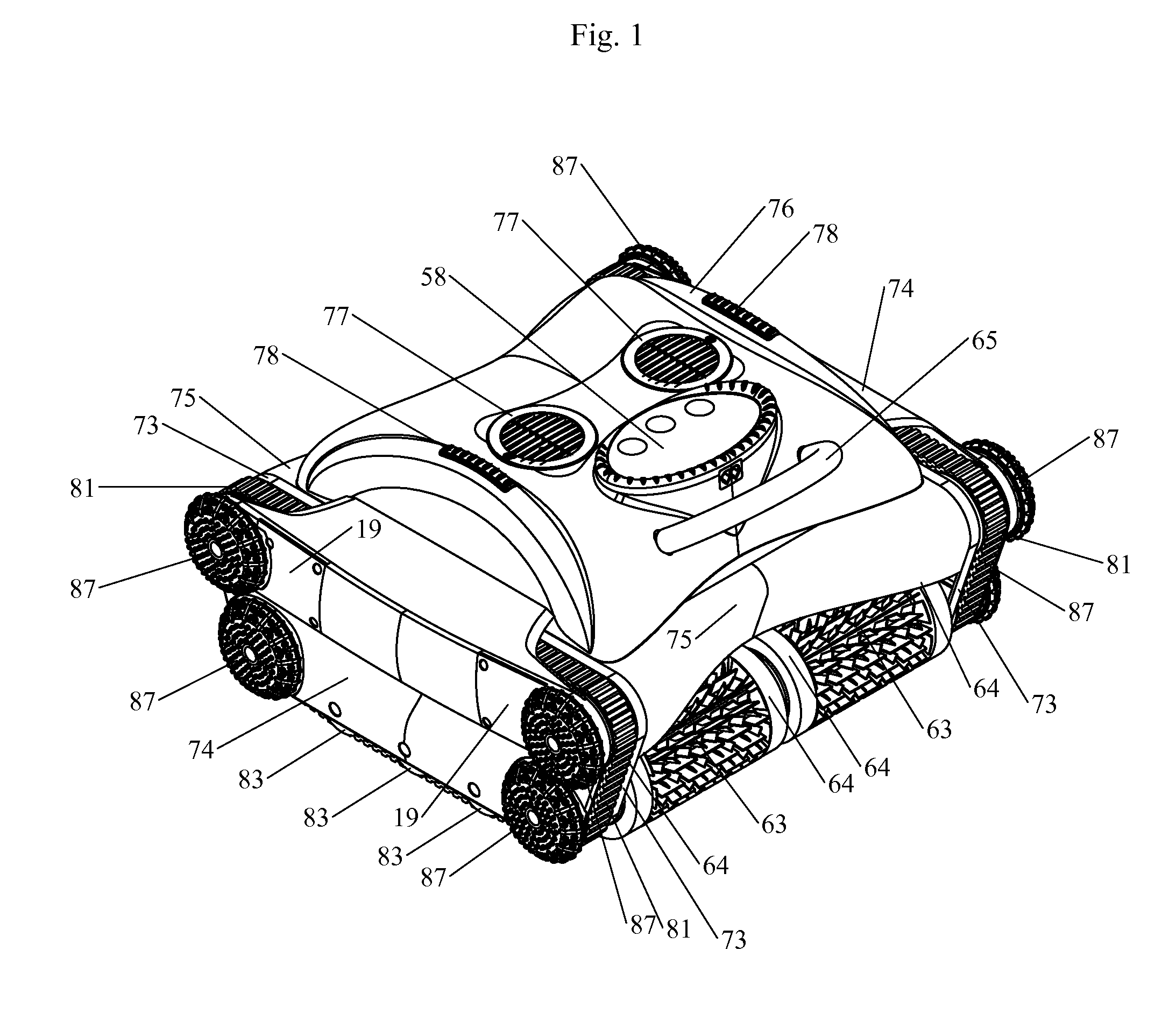Robotic pool cleaning apparatus
a robotic and pool technology, applied in the direction of gymnasiums, buildings, buildings, etc., can solve the problems of obstructing the cleaning unit, tangled hoses used with older units, and few, if any, can clean the surface of the swimming pool cordlessly and autonomously
- Summary
- Abstract
- Description
- Claims
- Application Information
AI Technical Summary
Benefits of technology
Problems solved by technology
Method used
Image
Examples
Embodiment Construction
[0100]With reference to FIGS. 1 to 11, a preferred embodiment of a cordless and autonomous robotic apparatus for cleaning surfaces of a swimming pool includes a frame with side frame parts 73 and 73, each with a side frame cover 74. The frame also includes a top cover 76 and front and rear frame body covers 75. The frame has a travel direction axis extending in a forward direction in FIG. 1 that is to the left and angled upwardly, and a rearward direction to the right and angled downwardly. The frame also has a transverse axis that is horizontally perpendicular to the travel direction and a vertical axis extending vertically in FIG. 1.
[0101]As best shown in FIGS. 8B and 9A, four pulley wheels 82 and three road wheels 83 are mounted for rotation to each side frame 73 on rotation axes shown in FIG. 14, that are parallel to the transverse axis. The road and pulley wheels define a trapezoidal belt path of each side of the apparatus frame. First and second track or traction belts 81 exte...
PUM
 Login to View More
Login to View More Abstract
Description
Claims
Application Information
 Login to View More
Login to View More - R&D
- Intellectual Property
- Life Sciences
- Materials
- Tech Scout
- Unparalleled Data Quality
- Higher Quality Content
- 60% Fewer Hallucinations
Browse by: Latest US Patents, China's latest patents, Technical Efficacy Thesaurus, Application Domain, Technology Topic, Popular Technical Reports.
© 2025 PatSnap. All rights reserved.Legal|Privacy policy|Modern Slavery Act Transparency Statement|Sitemap|About US| Contact US: help@patsnap.com



